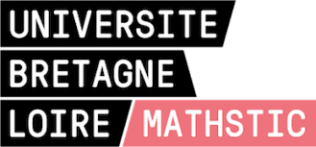PhD defence, Antoine Caubrière
Date : 29/01/2021
Time : 14h00
Location : IC2 building, LIUM, Le Mans Université, online
Title: From signal to concept: Deep neural networks applied to spoken language understanding
Jury members:
- Ms. Irina ILLINA, Lecturer – HDR, Université de Lorraine – LORIA / INRIA, Reviewer
- Mr. Benoit FAVRE, Lecturer – HDR, Aix-Marseille Université – LIS, Reviewer
- Mr. François PORTET Professor, Université Grenoble Alpes – LIG, Examiner
- Mr. Yannick ESTEVE, Professor, Université d’Avignon, PhD Director
- Mr. Emmanuel MORIN Professor, Université de Nantes – LS2N, PhD co-Director
- Mr. Antoine LAURENT, Lecturer, Le Mans Université, Co-supervisor
- Ms. Sophie ROSSET, Research Director, LIMSI, CNRS, Université Paris-Sud, Invited
Abstract :
This thesis is part of the deep learning applied to spoken language understanding. Until now, this task was performed through a pipeline of components implementing, for example, a speech recognition system, then different natural language processing, before involving a language understanding system on enriched automatic transcriptions.
Recently, work in the field of speech recognition has shown that it is possible to produce a sequence of words directly from the acoustic signal.
Within the framework of this thesis, the aim is to exploit these advances and extend them to design a system composed of a single neural model fully optimized for the spoken language understanding task, from signal to concept. First, we present a state of the art describing the principles of deep learning, speech recognition, and speech understanding. Then, we describe the contributions made along three main axes. We propose a first system answering the problematic posed and apply it to a task of named entities recognition. Then, we propose a transfer learning strategy guided by a curriculum learning approach. This strategy is based on the generic knowledge learned to improve the performance of a neural system on a semantic concept extraction task. Then, we perform an analysis of the errors produced by our approach, while studying the functioning of the proposed neural architecture. Finally, we set up a confidence measure to evaluate the reliability of a hypothesis produced by our system.
Keywords :
Spoken language understanding, Deep neural networks, From signal to concept, Named entity recognition, Semantic concept extraction, Errors analysis, Confidence measure



 Français
Français
